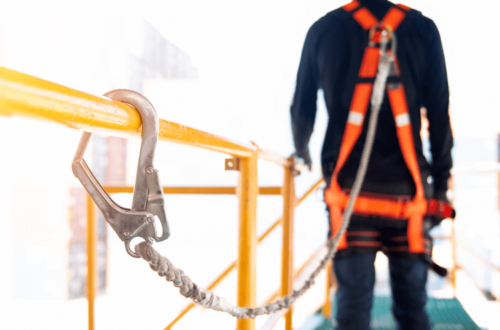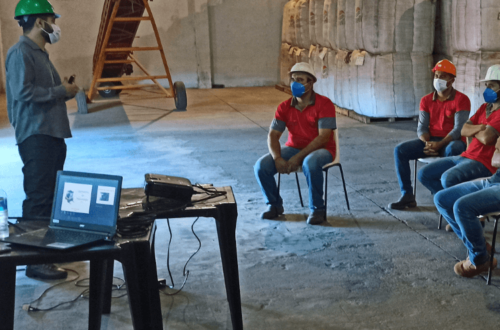
Protective Gear and Beyond
Advancements in Safety Equipment for Industrial Jobs
Industrial jobs are fraught with various risks, making worker safety a top priority for employers and industries alike. Over the years, the development of protective gear has evolved significantly, aiming to safeguard workers from potential hazards. This article delves into the latest advancements in safety equipment, going beyond traditional Personal Protective Equipment (PPE) to explore innovative solutions that ensure both optimal protection and enhanced productivity.
Traditional Personal Protective Equipment (PPE)
The foundation of industrial safety gear lies in conventional PPE, which includes helmets, gloves, goggles, earplugs, and high-visibility vests. While these have been effective in providing basic protection, they do have limitations. Heavy materials and lack of flexibility can lead to discomfort and hinder workers’ movements. Thus, there is a need for advancements that address these challenges and offer a higher level of protection.
10 Essential Traditional Personal Protective Equipment (PPE) for Optimal Safety
While advanced technologies continue to evolve, traditional PPE remains a reliable and time-tested defense against various hazards. In this list, we’ll explore ten essential traditional PPE items that are still widely used today to ensure safety and protection.
1. Safety Helmets:
Also known as hard hats, safety helmets offer crucial head protection in industries like construction, manufacturing, and mining. They shield workers from falling objects, impacts, and potential electrical hazards, reducing the risk of head injuries.
2. Safety Glasses:
Eye protection is paramount in work settings with flying debris, chemicals, or intense light. Safety glasses with impact-resistant lenses shield the eyes from potential hazards and help maintain clear vision, reducing the chances of eye injuries.
3. Earplugs and Earmuffs:
In noisy environments, ear protection is vital to prevent hearing damage or loss. Earplugs and earmuffs reduce exposure to high noise levels, safeguarding workers’ hearing health in industries such as construction, manufacturing, and aviation.
4. Respirators:
Respiratory protection is essential in environments with airborne particles, harmful gases, or infectious agents. Respirators provide a barrier to inhalation hazards, protecting the lungs from potentially dangerous substances.
5. Protective Gloves:
Protective gloves come in various materials and designs to suit specific tasks. They shield the hands from cuts, abrasions, chemicals, and biological hazards, ensuring hand safety in occupations such as healthcare, construction, and manufacturing.
6. High-Visibility Clothing:
Workers in low-light conditions or near moving vehicles require high-visibility clothing. These brightly colored garments with reflective strips enhance visibility, reducing the risk of accidents in construction zones, roadwork, and traffic control.
7. Safety Footwear:
Safety shoes or boots provide foot protection against heavy objects, sharp materials, and slippery surfaces. Commonly used in construction, warehousing, and industrial settings, they safeguard the feet from potential injuries.
8. Welding Shields and Goggles:
Welding and cutting processes release intense light and harmful UV radiation. Welding shields and goggles shield the eyes and face from these hazards, preventing arc eye and other welding-related injuries.
9. Aprons and Protective Clothing:
Chemical spills, splash hazards, and biological agents call for specialized protective clothing. Aprons, coveralls, and chemical-resistant garments create a barrier between the wearer’s body and hazardous substances, ensuring full-body protection.
10. Safety Harnesses and Fall Arrest Systems:
For workers at height, safety harnesses and fall arrest systems are vital PPE. These devices prevent falls and minimize the risk of severe injuries in construction, window cleaning, and other elevated work environments.
Remember, using appropriate traditional PPE is crucial for ensuring personal safety and reducing workplace accidents. Always follow the manufacturer’s guidelines and receive proper training to maximize the effectiveness of these essential protective items. Stay safe and protected!
Digital Solutions for Safety Enhancement
The digital revolution has also impacted industrial safety, with Internet of Things (IoT) devices and wearable technology taking center stage. These devices can monitor workers’ health, location, and environmental conditions, providing valuable data for safety analysis. Proactive interventions based on real-time data analysis help identify patterns and predict potential safety hazards, allowing for timely preventive measures. Additionally, Artificial Intelligence (AI) is leveraged to perform automated risk assessments and generate safety protocols based on the data gathered, further enhancing safety standards.
Advancements in safety equipment for industrial jobs have come a long way, transforming traditional PPE into smart and innovative solutions. From intelligent helmets and AR goggles to IoT devices and AI-powered systems, technology has revolutionized worker protection. These advancements not only ensure workers’ safety but also enhance their efficiency and productivity. As industries continue to invest in research and development, the future promises even more innovative safety solutions, solidifying the commitment to keeping workers safe in the workplace.






